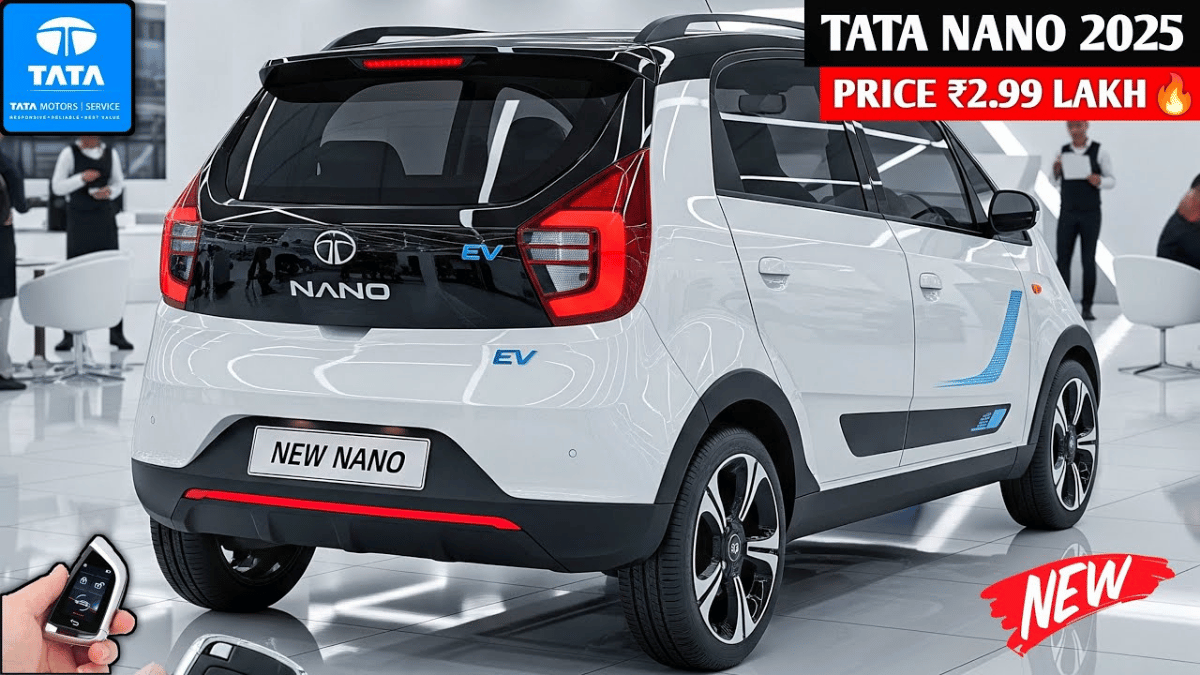Tata Nano: A Budget-Friendly Car
The Tata Nano, originally envisioned as the world’s cheapest car, made waves when it was first unveiled in 2008. Created by Tata Motors with the goal of providing an affordable yet safe alternative to motorcycles for families in India, the Nano was hailed as a revolution in urban mobility.
Tata Nano: A Game-Changer at Its Core
When the Tata Nano first launched, it was priced at just ₹1 lakh, setting it apart as the most affordable car in the world. The car was designed to appeal to lower-income families who needed an alternative to motorcycles. Despite its appeal, the Nano faced hurdles such as safety concerns, a lack of proper marketing strategies, and performance issues, which led to its discontinuation in 2018.
Is the Tata Nano Making a Comeback?
After a few years of silence, Tata Motors is considering the idea of reviving the Nano, but this time with a modern twist. The new version of the Nano, speculated to be an electric vehicle (EV), promises better safety, performance, and design upgrades that could make it appealing to today’s market. With electric mobility becoming increasingly important, the Nano is expected to play a significant role in providing an affordable EV option for the masses, potentially reshaping the landscape of the automotive industry.
Expected Pricing and Variants
While there is no official price yet for the new Nano, industry experts suggest that the car will be priced in the range of ₹6 to ₹9 lakh. This price point would place it in direct competition with other budget-friendly electric vehicles, such as the MG Comet EV, which has a similar price range. If Tata Motors goes ahead with the Nano’s revival, it could reassure budget-conscious customers that they have an affordable entry into the world of electric vehicles.
What to Expect from the New Nano
- Electric Powertrain: With a focus on eco-friendliness, the new Nano is likely to feature a battery-powered electric motor. Expect a driving range of up to 200 km on a full charge, which would make it perfect for urban commutes.
- Modern Design and Features: Gone will be the basic features of the old Nano. The new model is expected to feature a contemporary design with a comfortable interior, a touchscreen infotainment system, and possibly semi-digital instrument clusters.
- Safety Upgrades: Tata Motors is likely to focus on making the new Nano safer, especially since this was one of the key concerns with its predecessor. Dual airbags, Anti-lock Braking System (ABS), Electronic Brakeforce Distribution (EBD), and rear parking sensors are some of the features that could be included.
- Compact Yet Practical: The Nano will retain its small, compact form, ideal for navigating crowded urban streets while also offering practical seating for small families or city commuters.
Competing in the EV Market
Should Tata Motors decide to bring the Nano back as an electric vehicle, it will find itself in competition with other small electric cars. The Nano’s low price, compact size, and potential electric powertrain could make it an attractive option for consumers looking to make the shift to eco-friendly transportation without breaking the bank.
Conclusion
The Tata Nano holds a special place in the hearts of many, symbolizing the effort to create an affordable solution for the masses. A new, electric version of the Nano could offer a perfect balance of affordability and sustainability, catering to those looking for a practical and budget-friendly car. If Tata Motors successfully revives the Nano, it could once again change the landscape of urban mobility in India and beyond, offering a hopeful and optimistic vision of the future.

